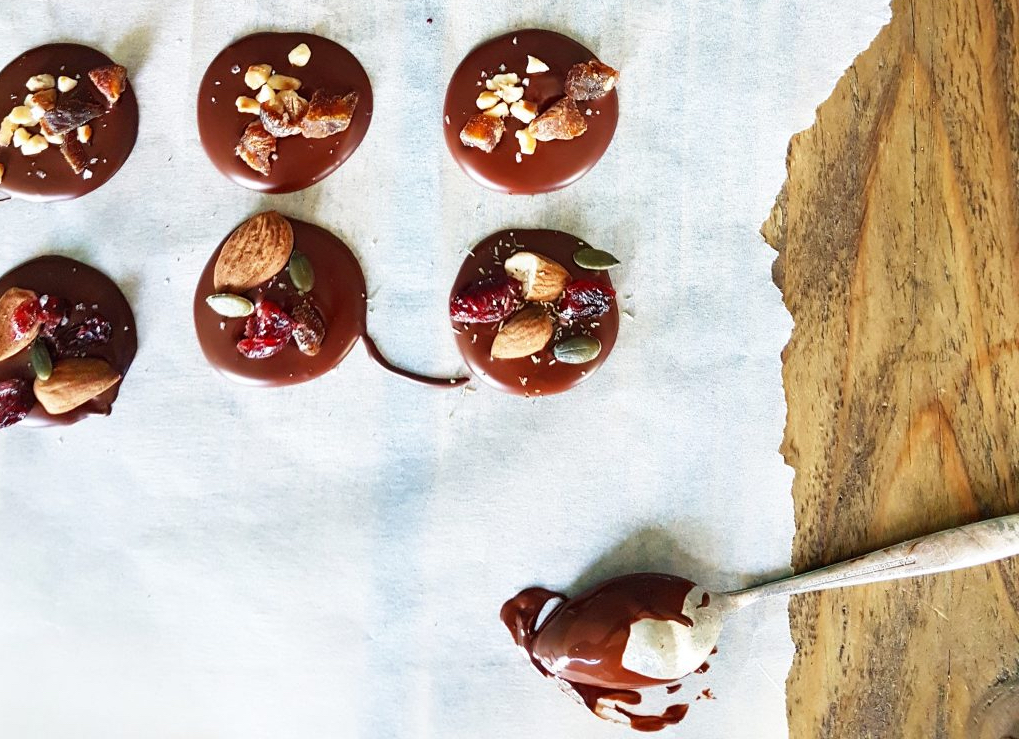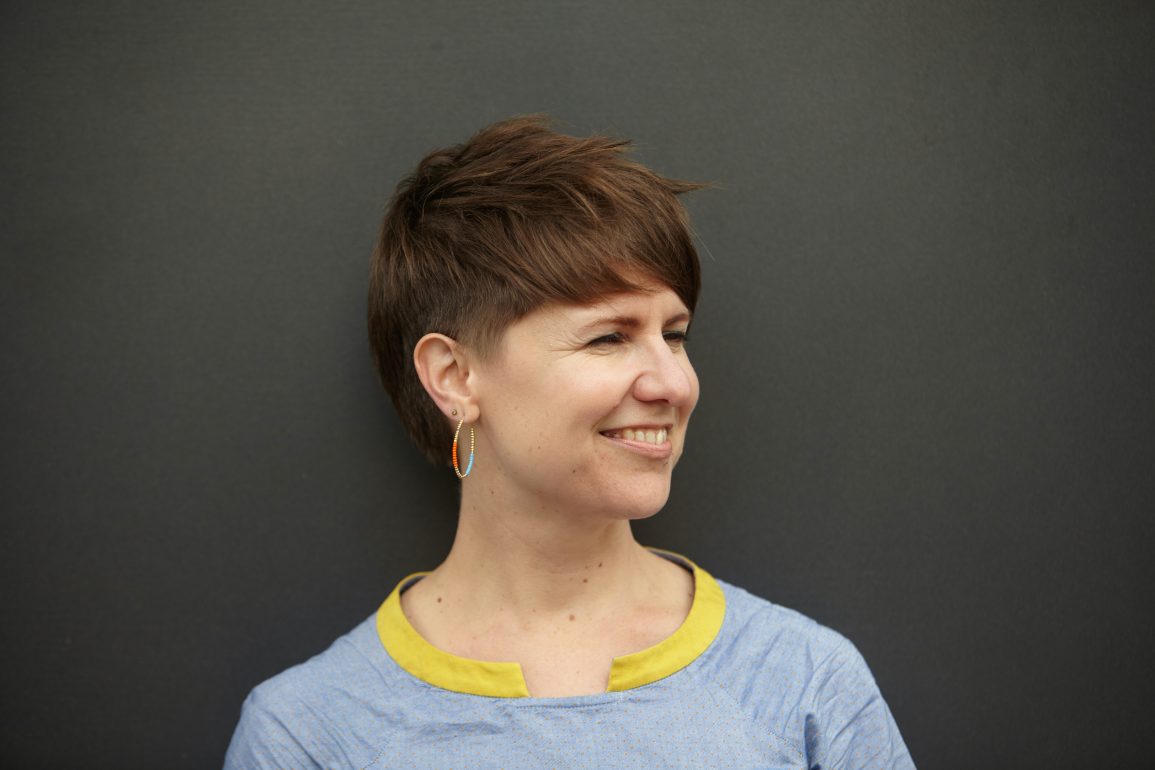Lilly Light talks to Meredith Whitely founder of Food At Heart
Many of us have a busy lifestyle, which can lead to stress, anxiety and even ill-health. It can be hard to slow down our pace and we are turning to wellness and alternative natural holistic therapies as an aid to this goal.
Through Food at Heart Meredith hopes to bring a little calm to minds and bellies through mindfulness, meditation and chocolate. Part of her time is spent running meditation sessions, often with chocolate woven through them, and the other time is in the kitchen either making chocolate creations for her sessions or mixing up her hot chocolate range, Calm Cocoa by Meredith Whitely.
Meredith’s aim is to share simple and accessible tools for helping busy or stressed people slow down a little and take time to breathe – even if for just one mouthful to start with!
How long have you been interested in mindfulness & meditation?
My journey into meditation was not really a straight one. I’ve dipped in and out of different types since I was a teenager, but what really made me recognise some of the benefits was meditations in tai chi and qi gong classes that I took to help with some back pain.
That said, I struggled to make meditation a daily habit as it always felt like I couldn’t quite make the time. Ultimately it was an issue with my digestion as a result of IBS that made me bite the bullet and to try a month of daily mindfulness meditation to see how I felt. It didn’t miraculously cure me, but I did notice some quite immediate benefits. When I started my business, I began to incorporate elements of mindfulness into my cooking sessions as I found it was a great way to explore taste. I then trained properly as a meditation teacher as I wanted to give people a more in-depth mindfulness experience.
What are the first steps for a beginner to introduce meditation into their life?
I always suggest finding a regular time you set aside each day to meditate, even if it’s 5 minutes. For me first thing in the morning is best before the distractions of the day kick in, but there’s no ‘perfect’ time for meditation as it depends on your schedule. There are so many great apps that can give you a taste of meditation, but I suggest Insight Timer as it has a really good selection of meditations (and is free). Try it for a month and see how you get on.
You may actually find attending a few classes or an introductory course is beneficial as it will give you a good foundation to practise from, especially as you can also ask any questions you might have. I often hear from people who have struggled with meditation that they can’t empty their mind – but you’ll be pleased to know this isn’t really the aim of meditation. It’s much more about observing where your mind is and then over time focus becomes easier. There are many, many different types of meditation so it may also be a matter of experimentation to find out what works best for you.
Should you meditate every day?
All the scientific studies indicate that you’ll get the most benefit from daily meditation and so I do have a mostly daily practice. That said, meditation is not about being perfect, so I do sometimes skip the odd Sunday morning to lie in bed a little longer to chat with husband, read a good book and cuddle our little dog (this is hugely beneficial for my mental health!). I also tend to incorporate little informal elements of meditation into my day, whether it’s through tasting or mindful walking when I’m out in the woods near my house.
What does eating mindfully mean?
Eating mindfully is partly about slowing down and paying attention to food while you eat, but it’s also about building a connection with your senses (and therefore ultimately your mind and body). Tasting involves all of our senses so it’s a great way to genuinely get in touch with your body and become more grounded in the present. More broadly, mindful eating is also about considering where food has come from and the many hands involved in sowing, growing, cropping and making it.
I think one of the best examples is what I do in my chocolate meditations, especially as this is actually very similar to the way we taste chocolate professionally. It involves removing distractions if you can, taking a couple of breaths, then starting to look at a piece of chocolate in front of you to see what you notice. This could be the colour, shape, or even where the light hits its surface. You can then touch the chocolate to observe how it feels, before breaking it to listen to the snap. This is followed by lifting the chocolate to your nose to smell, then popping a small piece on your tongue to melt, paying attention to how it feels in your mouth, and what flavours and tastes you experience. This is done slowly, finishing each mouthful and pausing before moving to the next, and just paying attention to how you feel as you go.
Mindful eating is also about stopping when you feel like you’ve had enough, which does become easier with practice. People are often surprised in my sessions how full they feel after not really eating very much as they’re paying attention!
Ultimately you can do this with any food or drink, but I find something that you enjoy and has lots of flavour or texture works best.

Have you always been passionate about food and particularly chocolate?
My mum is an amazing cook, so food has always been important to me. Some of my earliest memories are of being in the kitchen with my mum baking. I also found that as I grew up cooking and baking were a huge source of stress relief and a way to express my creativity.
Like many people, Dairy Milk was the first chocolate I remember, but even when I was young, we used to make our own Easter eggs for each other, and I always loved chocolate desserts. When I moved to the UK over 20 years ago, I discovered Green & Black’s and then Montezuma’s, and they were my step into better chocolate. It’s really been an ongoing love affair since then, which went from a personal passion to also become the focus of my work.
Are there any particular couverture chocolate brands you prefer to use whilst cooking and why?
There are so many brands doing amazing things in chocolate, but one of my favourites is the brand I use in own chocolate making and sessions, Pump Street Chocolate. Pump Street is based in Suffolk and works directly (and sustainably!) with a selection of cacao plantations around the world to ethically source their beans. They make truly amazing chocolate. For supermarket available brands, I’m a big fan of the Willie’s Cacao range and Montezuma’s 100% Cocoa Dark Chocolate.


How are food and wellbeing linked?
What we put into our bodies is hugely important to our gut health, mental health, energy levels and pleasure. It’s very difficult to be truly well without considering food. Food also connects us to nature and the world around us.
We now know so much more about the gut mind connection, and variety in what we eat is an important element of the healthy gut microbiome. This is particularly important if you’re someone like me with digestive issues.
The whole process around preparing and eating food is also important. Gobbling down a sandwich quickly in front of a laptop is a very different experience to taking your time to truly enjoy what you’re eating, including sharing the experience with someone over good conversation!
For more information visit here
For upcoming Food At Heart Events visit here
Lilly Light


